Fugitive (Unbidden) 2004
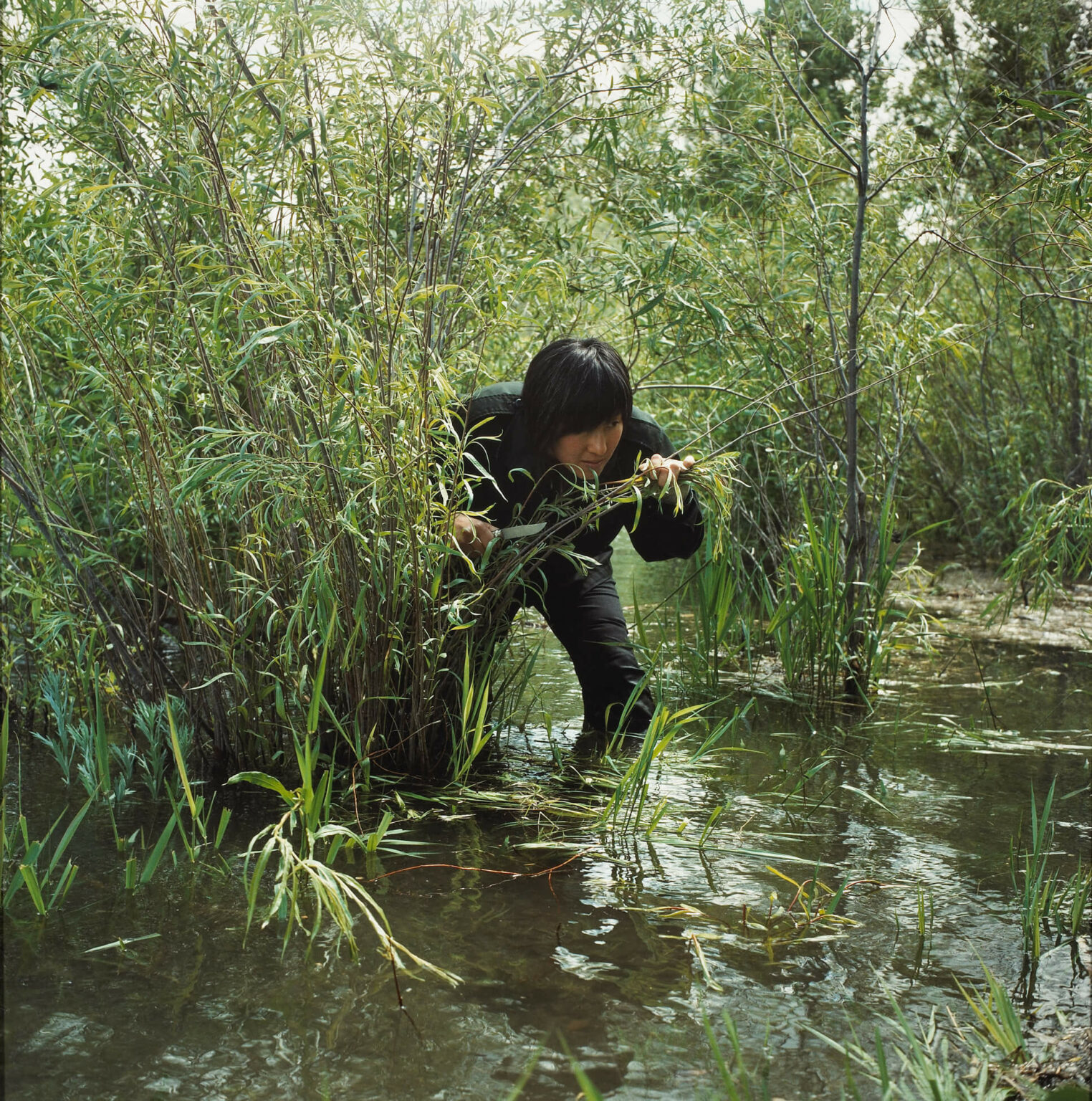
Jin-me Yoon, Fugitive (Unbidden) 3, 2004
Chromogenic print, 96.5 x 96.5 cm
National Gallery of Canada, Ottawa
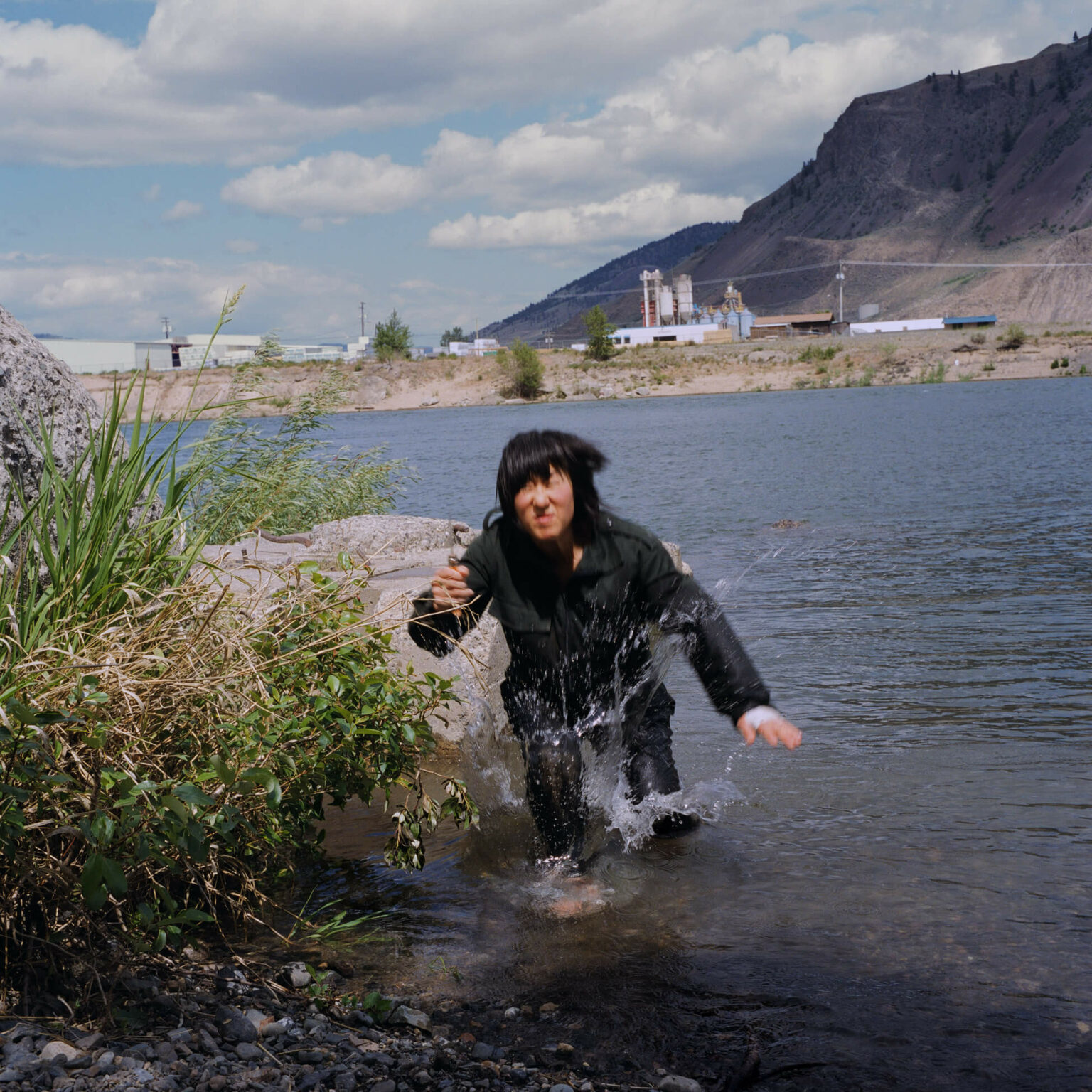
Jin-me Yoon, Fugitive (Unbidden) 5, triptych 3 of 3, 2004
Chromogenic print, 76.2 x 76.2 cm
Fugitive (Unbidden) is a transitional work that moves Jin-me Yoon’s art into reflections on difficult histories and the mobility of memories that immigrants carry from one place to another. It consists of four videos—Grassland, Underbrush, Jungle-Swamp, and Channel—as well as a series of photographic works of performance. The first three videos feature Yoon as a black-clad figure, evocative of a Hollywood ninja or a Viet Cong resistance fighter, prowling through bamboo groves in Pioneer Park, Kamloops, British Columbia. Yoon is seen variously crawling, hiding behind boulders or in stands of grass, jumping into water, and holding a knife. Channel is very different in tone, dominated by images of water and melancholy tranquillity: Yoon floats down a river like Ophelia in Hamlet, wearing a hanbok, the traditional Korean dress.
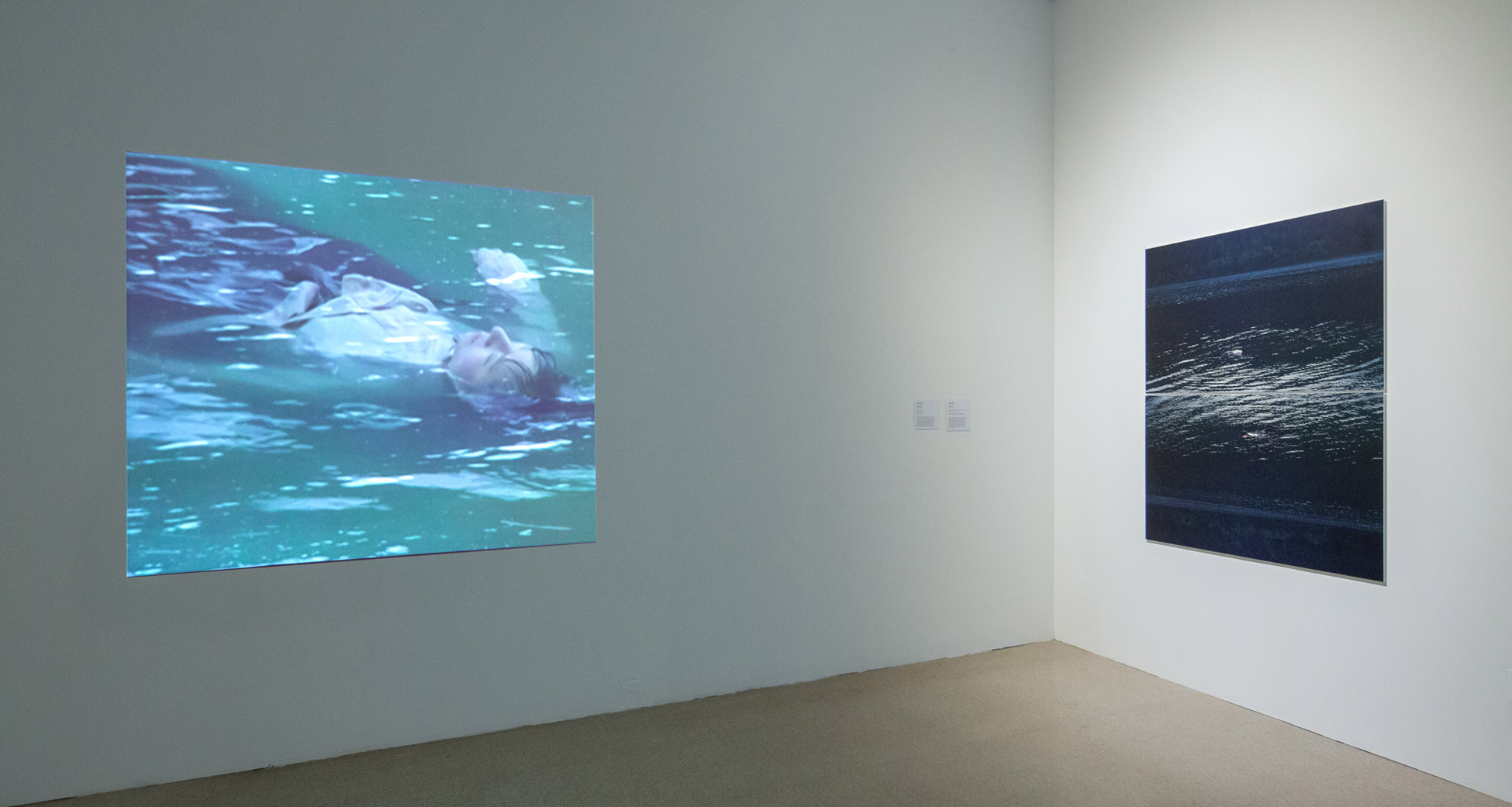
The dual forms of representation in Fugitive (Unbidden) capture two of the very restricted and gendered modes available to Asian bodies even up to the early 2000s—that of enemy in war, and that of feminized (often sexualized) victim. By playing both roles, and emphasizing the artificiality of her performance, Yoon exposes the stereotypes that are imposed on Asian bodies through popular culture and the ways in which Asian subjects are constituted (if at all) in the media through one-dimensional portrayals.
Beyond the statement it makes about Hollywood representations of Asian bodies, Unbidden also articulates the post-traumatic experiences of immigrants from war-torn countries. Yoon created the videos in response to the fiftieth anniversary of the armistice that ended the fighting in the Korean War in 1953, to explore how intergenerational histories of strife have been carried in the body, across oceans and continents, before their bearers’ resettlement in Canada. Seemingly innocuous Canadian geographies are reimagined as fugitive landscapes of conflict by Yoon’s characters, who are haunted by unbidden memories as they run, crawl, and hide. Standing in relation to other histories of war and violence in the context of immigration and settler-colonialism in Canada, the project speaks to bodies unbidden to this land, and seeks liberation through solidarity.

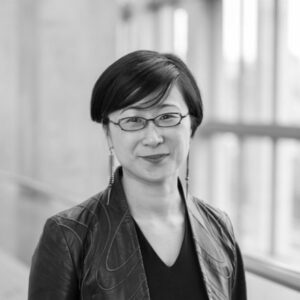 About the Author
About the Author
 More Online Art Books
More Online Art Books
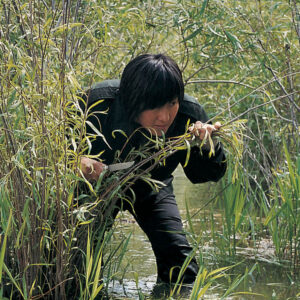 Acknowledgements
Acknowledgements